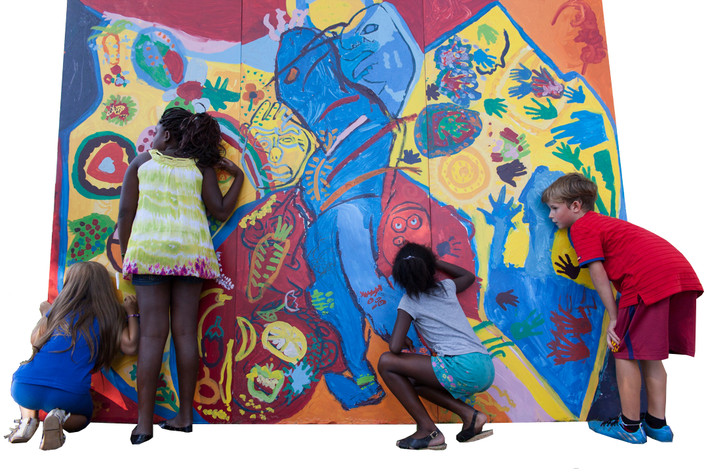The Giant: An Inter-Generational Collective Work

Starting in the early 2010s, access to quality education for all has been at the heart of ATD Fourth World’s priorities. In this series, you will learn about the work done by ATD Fourth World teams in the field of education, including early childhood education.
In the months ahead, regular publications featuring ATD’s educational achievements will be released. These accounts tell the story of ATD Fourth World initiatives and their collaborations with children, families, and communities.
We will explore teams dedicated to supporting specific aspects of children’s lives and development. One team aims to reinforce family ties, another assists with children’s schooling and academic success, while another contributes to the cultural enrichment of neighborhood children…
Each of these narratives threads together to form a vibrant framework for a society that can offer quality education for all — including children in poverty.
This month Caroline Moreau writes about the Street Library in Hochelaga, a neighborhood of Montreal. Here she describes how, in 2016, they turned oral histories into artwork.
The Giant
In 2016, the ATD Fourth World team, along with children from the local Street Library, started collecting oral histories from adults of Hochelaga, a neighborhood in Montreal.
Through this project, the children and Street Library facilitators learned of the amazing richness of the adults’ lives and culture.
Those interviewed put their experiences into words, without glossing over their difficulties. Often children had lived through the same challenges without understanding or talking about them. These oral histories were then recorded and, together with the artist Joëlle Tremblay, an artwork was created: The Giant.
People of all ages felt immense joy by creating an artwork together. An artwork they could proudly share with others, including the Montreal Museum of Fine Arts where it was displayed.
This method of sharing and passing on experiences and memories and then collecting them in a body of work, transformed the community of Hochelaga, freeing its children to learn and create. It meant the inhabitants of Hochelaga became creators in the full sense of the term, permitted to collect a community’s heritage and create something unique from it. By unleashing the creative potential of Hochelaga’s children, members of the community could now see each other in a new light.
Learn more about the events that occurred in Hochelaga, particularly concerning a child named Tiago.

